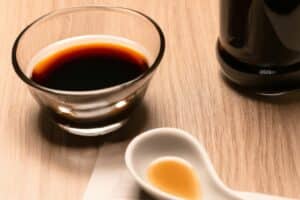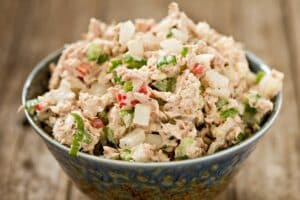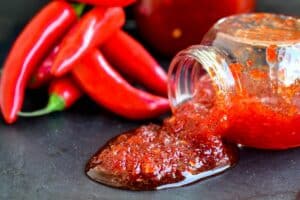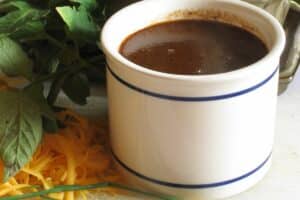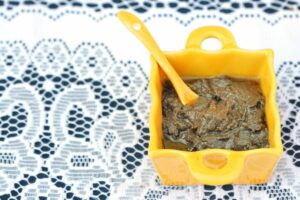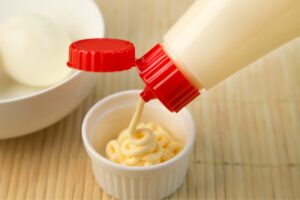Red curry paste is a staple in Thai cooking that forms the foundation for dishes such as curry, pra ram, and tom yum soup. Some people even choose to eat it as a condiment.
Curry or a good substitution for red curry paste goes well on Thai-style sandwiches and with egg dishes.
There are various red curry paste substitutes, but we’ve narrowed it down to the top five: Curry Powder, Green or Yellow Curry Paste, Homemade Curry Paste, Harissa Paste and Chilli Paste
Curry paste is quick and easy to use, even for beginners. If you have some pre-prepared paste stored in the fridge, you can whip up a delicious curry in just minutes with a little bit of coconut milk. Curry is a versatile dish that can include anything from chicken and pork to tofu and fresh veggies.
The Ingridients in Red Curry Paste
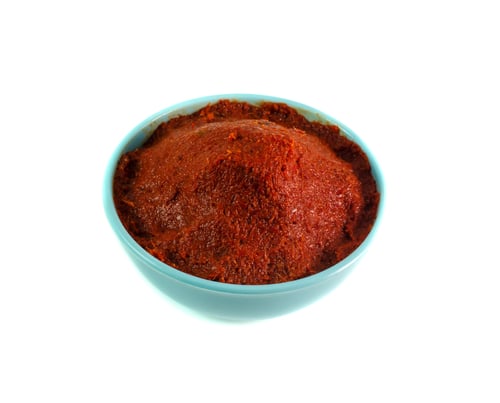
The ingredients in red curry paste can vary depending on regional tastes and personal preferences. In general, most curry paste that you can find in the supermarket contains several core ingredients, including various types of red chili pepper, lemongrass, garlic, turmeric, and shrimp paste.
Recommended Red Curry Paste Substitutes
1. Curry Powder: The Best Substitute for Thai Red Curry Paste
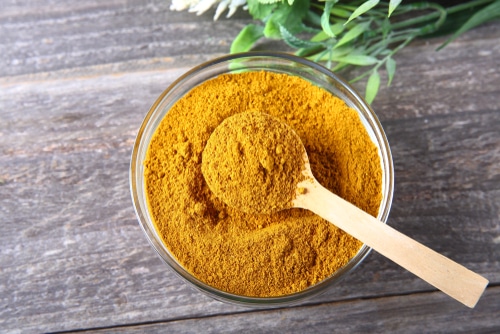
While not everybody has curry paste on hand, many people have dried curry powder in their spice rack. Unlike most other common herbs and spices, curry powder doesn’t come from a single plant. Instead, it contains a mixture of spices.
Most curry powder contains turmeric, chili powder, ginger, and cumin. Some varieties may also include spices such as ground coriander and black pepper for more of a zesty flavor. Some home chefs even choose to mix their own stock of curry powder.
Because curry powder contains many of the same components as curry paste, the two often get used interchangeably. In most cases, you can substitute one teaspoon of dry curry powder for every one tablespoon of curry paste in a recipe.
Curry powder can lend a complex blend of spices to any meal, including Thai dishes. While curry powder includes many of the same spices and flavors as red curry paste, it’s important to remember that the two are not equal.
A Thai dish made with curry powder will taste significantly different from one made with curry paste. The powder tends to have a stronger, spicier, more aromatic flavor than paste, adding less sweetness to dishes.
Because curry powder is so strong, it’s best to be conservative when using it as a red curry paste substitute. Start with a small amount and taste your dish before adding more. If you overshoot, your meal may end up being too spicy to handle.
2. Green or Yellow Curry Paste: An Easy Red Curry Paste Substitute
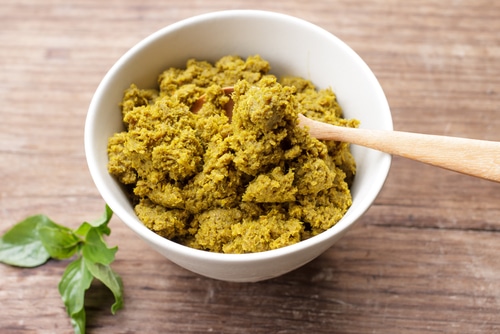
Red curry paste isn’t the only type frequently used in Thai cooking. Many recipes also call for green or yellow curry paste. Both contain many of the same components as red curry paste, and though each has a distinct flavor, all three pastes share a similar taste profile.
While red curry paste contains different red chili varieties, green curry paste uses milder green chilis in the mix. As a result, green curry paste tends to lend less heat when used in cooking. The addition of ingredients such as coriander and kaffir lime leaf also gives green curry a bright, zesty taste.
Instead of chilis, yellow curry paste relies on turmeric as its main ingredient. While similar to red curry paste, yellow curry paste has a more aromatic flavor reminiscent of Indian cooking. Yellow curry is often spicier than green, though not as spicy as red.
In most cases, you can interchangeably use different curry paste colors to get a similar result. If you can’t find red curry paste, green or yellow will often do in a pinch. Just keep in mind that your final dish may be a little bit milder than expected.
3. Homemade Curry Paste: A Do-It-Yourself Option
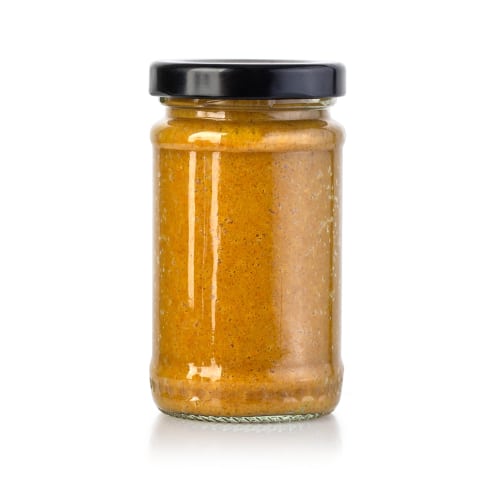
When you can’t find store-bought curry paste, you can try making your own for delicious results. You can find most of the raw ingredients that you need at your local supermarket.
If you don’t have access to specialty varieties such as Thai bird’s eye chilis, you can use whatever types of fresh red chili you can find in the supermarket. In a pinch, you can try rehydrating dried chilis or even using bell pepper as an alternative.
Lemongrass and kaffir lime are what normally give red curry paste its signature citrus undertones. However, both of these ingredients can be difficult to find anywhere other than specialty stores. Instead, you can substitute fresh lemon and lime rind to give your curry paste the lift that it needs.
Shrimp paste is another core ingredient that can be tough to find. You can use anchovy paste as an alternative or use mild miso paste for a savory umami flavor. Other ingredients such as ginger, garlic, and dried spices should be easy to find around the kitchen or at your local supermarket.
Homemade curry paste is perhaps the most realistic and reliable substitute for red curry paste. However, it can take some time to prepare. Avoid the wait by preparing a large batch to have on hand for easy curries and Thai dishes on demand.
4. Harissa Paste: A Spicer Substitute for Red Curry Paste
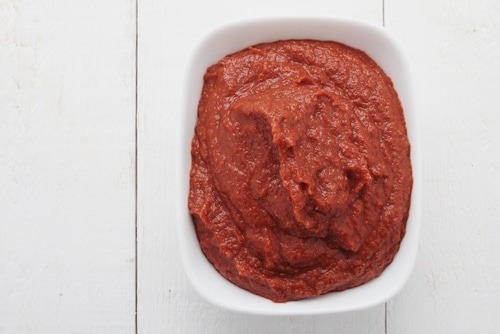
While Thai food often uses red curry paste as a foundation, North African cuisine similarly relies on harissa paste. This spicy addition to dishes shares many common ingredients with red curry paste, including red chilis, garlic, coriander, and citrus flavor.
Harissa tends to be more acidic than red curry paste, thanks to the addition of vinegar, and also lends more heat and spice than red curry paste. Because of this heat, harissa may not be a good choice for spice-sensitive individuals.
Harissa paste is fairly similar in taste to curry paste and makes a good substitute in Thai dishes despite its heat levels. Like curry pastes, you’ll often find harissa in the International aisle of your local supermarket.
Keep in mind when using harissa that it contains more oil than red curry paste, so it’s likely to thin out sauces more. You may have to adjust how much you use in a recipe. Start with just half of what you need and adjust according to taste.
5. Chili Paste: A Mild but Workable Substitute for Red Curry Paste
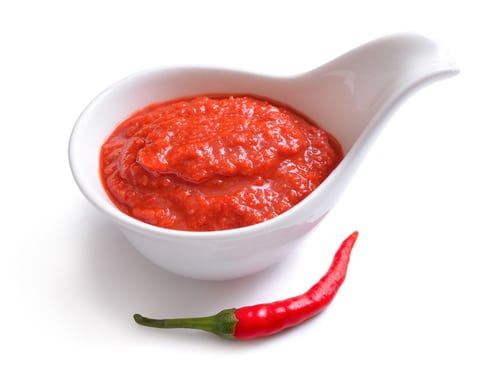
Chili paste is a good substitute for Thai red curry paste that’s easy to find in any supermarket. Dried chilis are roasted, reconstituted, and pulverized to make a thick and flavorful paste. Heat and flavor are concentrated to bring you a powerful addition to any Thai dish.
Chili paste often gets confused with chili sauce, but the two are slightly different ingredients. Though they include the same components, processing removes more water from chili paste. The paste won’t affect the consistency of your food as much as more watery chili sauce.
You can use chili paste in place of red curry paste in many Thai dishes. As the name suggests, it contains red chilis similar to those found in red curry paste. However, it lacks many of the other components and boasts a less complex flavor profile.
If you want to substitute chili paste for red curry paste, it can help to add some additional spices to maintain authenticity in your dish. A little bit of fresh lemon or lime, some ginger, and a dash of coriander can work wonders towards making chili paste work in a Thai dish.
Related Article: Substitute for Korean Chili Pepper
Frequently Asked Questions
Red curry paste often appears in Thai recipes, particularly those for different types of curry. However, you can also use red curry paste in other recipes that call for spice or heat. Experiment according to your tastes and see where curry paste makes a good addition to a dish.
Some supermarkets sell red curry paste, though it may be hard to find in large chains. In some cases, you may need to visit a specialty shop to find pre-made curry paste. Because most manufactured curry paste comes in a nonperishable form, you can also order it online.
In Summary
While red curry paste is a common ingredient in Thai cooking, it can be a challenge to find at your local supermarket. Thankfully, there are plenty of alternatives that make a good substitution for red curry paste.

